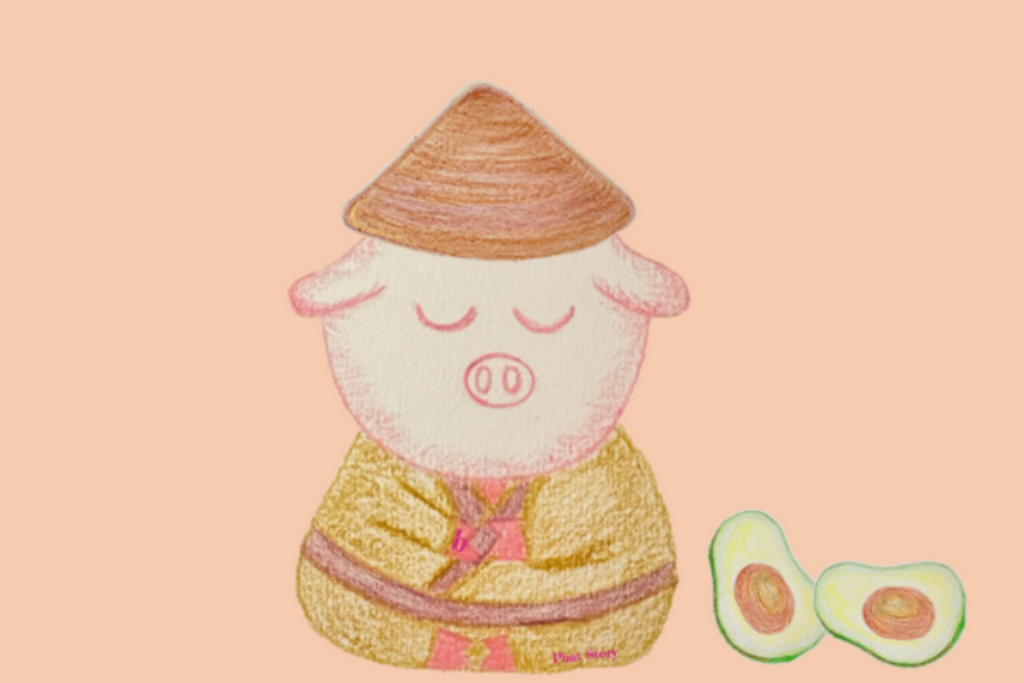When you think of eating veggie food at a temple, do you immediately picture your mom or grandma taking you to a temple after prayers, grabbing a simple veggie lunch box? Maybe a plate of plain boiled greens and some dry tofu that leaves you still hungry after. But guess what? Those “old-school” temple meals have had a major glow-up! Now, they’re showing up in fancy restaurants as elegant, refined dishes. Yep, eating plant-based food isn’t just healthy. It is a tasty, stylish, elegant, and classy lifestyle choice.

How did temple cuisine get so fancy?
In recent years, there are a number of fine dining restaurants that serve veggie food like works of art. Japan has Shojin Ryori, and Korea has Temple Cuisine. Veggie dishes are no longer just something you eat at temples. They’ve made their way into high-end restaurants, becoming a trendy food choice that represents style and health-conscious living.
Especially in Korea, more and more temple cuisine restaurants are gaining popularity, focusing on fresh, natural ingredients, beautiful plating, and modern cooking techniques. This makes veggie dishes feel full of flavour and layers. Korean temple cuisine has even made its way to Hong Kong, where high-end veggie restaurants have adopted this style, taking traditional veggie food to a whole new level. In Japan, Shojin Ryori is treated like art. Each dish is meticulously plated with a sense of calm and Zen, making you feel peaceful just by looking at it, and bringing a sense of tranquility with every bite.
What Is Shojin Ryori?
When it comes to Shōjin Ryōri, it’s Japan’s temple veggie cuisine. The difference between this and normal vegan is no “five pungent spices” (scallions, garlic, leeks, onions, and chives). Why no five pungent spices? Well, Buddhism believes these ingredients can stir up emotions, making it harder to focus and meditate. Skipping these bold flavours does not mean the dishes are bland. On the contrary, Shōjin Ryōri really highlights the natural flavors of the ingredients, using clever seasonings and cooking techniques to create dishes that are not only delicious but also a feast for the eyes. After a meal, your stomach feels full, and your soul feels like it’s been cleansed too.
The popular whole food trend in Europe?
Well, temples have been doing that for ages!
Recently, whole food concept, a big food trend in Europe and the U.S., has been all about eating food in its most natural form, keeping all those amazing nutrients intact by sticking to minimally processed or unprocessed foods, because that’s the healthiest way to go. But guess what? This “back to nature” concept has been around in temple cuisine for a long time.
Shōjin Ryōri focuses on minimal processing and seasoning, preserving the natural flavours of the ingredients—just like what Whole Food promotes. You’ll find fresh wild veggies, simple steamed root vegetables, tofu, and fermented foods in temple cuisine. These are the purest ways to eat. I
Not just pretty, it’s super tasty
The soul of Shojin Ryori is all about using simple ingredients to create big, bold flavours. From Japanese tofu dishes to Korean fermented veggies and Hong Kong’s creative fusion plates, every bite is a delightful surprise.
Image the Japanese sesame tofu. It is smooth and creamy with a hint of sweetness, drizzled with soy sauce for that perfect umami kick. When you bite the Korean seasoned greens, you will feel the light, fresh feeling in your mouth. It is addictive.
Eating veggies now is on trend
Eating vegetarian is not just about religion anymore. It is a lifestyle choice. Next time you’re out with friends, skip the “oh, veggies are boring” talk and take them to try some fancy temple cuisine. They’ll be amazed at how delicious and beautiful plant-based dishes can be.



